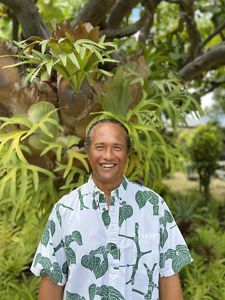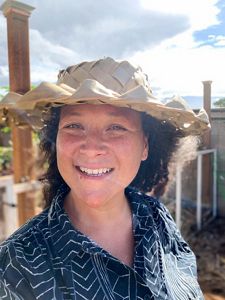We are children of Maui, children of Hawaiʻi, children of the sea. We are taught that the ocean is our life, it is where we come from. We are taught to mālama i ke kai a mālama ke kai ia ‘oe, to care for the ocean and the ocean will care for you.
We embrace this kuleana and we know that many of you do, as well. That’s why we are asking you to join us in support of efforts to build community and reef resilience at Olowalu, Maui.
Quote
It is often said that change begins at home. We hope you will join us to make positive change for our island home by supporting these nature-based solutions to strengthen coastal and community resilience at Olowalu.
The area between Pāpalaua and Olowalu has long been known for its beautiful beaches and vibrant reef, home to the largest manta ray population in the U.S. But if you’ve visited the area lately, you've probably noticed something else. As a result of rising sea levels, Olowalu’s beaches are eroding, and its highway—the only road connecting West Maui with the rest of the island—experiences chronic flooding. The reef that slows wave energy, protecting the coastline and community from the power of the sea, is also in decline. Recent research confirmed that it lost 45% of its corals during the 2015 statewide bleaching event, and water quality monitoring confirmed that sediments carried from mauka watersheds settle on the reef where they displace, smother and sometimes kill coral.
The good news is there are several efforts underway to address these issues. The Hawaiʻi Department of Transportation is planning to move four miles of Honoapiʻilani Highway inland, so it won’t be constantly inundated by waves. The Department of Land and Natural Resources’ Division of Forestry and Wildlife is identifying areas for mauka restoration to reduce sediment loads on the reef, and its Division of Aquatic Resources identified Olowalu as one of five priority areas for coral restoration to proactively build the reef’s resilience.

These efforts provide us with opportunities to mālama i ke kai and restore the ʻāina in ways that support our culture, our island ʻohana and future generations. By restoring nature’s infrastructure, including reefs, wetlands, beaches and sand dunes, and implementing effective mauka-makai management, we can help our islands adapt to climate change in ways that are less costly and more sustainable than engineered hard surfaces. Maui County’s proposed West Maui Greenway from Ukumehame to Lipoa Point provides additional opportunities to restore and protect our natural infrastructure.
It is often said that change begins at home. We hope you will join us to make positive change for our island home by supporting these nature-based solutions to strengthen coastal and community resilience at Olowalu.
And by all means, if you want to get your hands dirty or get in the water, we encourage you to volunteer with Maui Cultural Lands or Kipuka Olowalu to restore lo‘i kalo and native landscapes, or with Hui O Ka Wai Ola to monitor coastal water quality.

Edwin (‘Ekolu) Lindsey
‘Ekolu leads organizations focused on holistic, mauka to makai (mountain to ocean) restoration. Through decades of community networking and service, ‘Ekolu speaks for those that cannot—coral, fish, pōhaku, plants and ‘Ohana who are not with us today.

Makale‘a Ane
Makale‘a leads community engagement & partnerships for TNC in Hawaiʻi & Palmyra. She's worked with indigenous communities & government agencies on ocean & coastal conservation issues for the public, private & non-profit sectors across Hawaiʻi for more than two decades.
